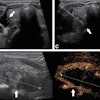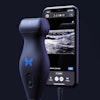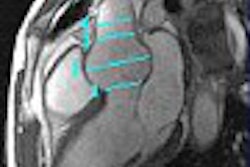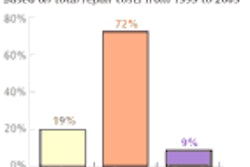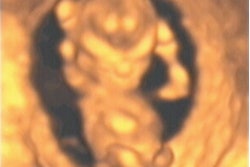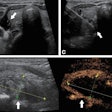(Ultrasound Review) Correctly diagnosing retained products of conception (RPOC) following spontaneous or induced abortion and parturition presents a clinical challenge, according to Israeli obstetricians at Edith Wolfson Medical Center in Holon.
Sonographic imaging and common signs and symptoms lead to an unacceptably high rate of false-positive diagnoses, wrote Dr. Oscar Sadan and colleagues in the Journal of Ultrasound in Medicine. Patients may undergo surgical removal of nonexistent RPOC, causing trauma and unnecessary risks such as uterine bleeding, perforation, and infection, intrauterine adhesions, and even infertility.
The authors retrospectively studied 156 patients suspected of having retained products of conception. "All patients underwent evacuation of the uterine cavity by suction, sharp curettage, or both for a presumptive diagnosis of RPOC," they wrote.
Symptoms at presentation included abdominal pain, bleeding, and fever. Positive ultrasound findings included hyperechoic or hypoechoic material within the uterine cavity, thickened endometrial stripe (> 8 mm), and irregular interface between the endometrium and myometrium.
Sagittal and axial transvaginal imaging was performed using a 6.5-MHz mechanical transducer. The authors did not indicate the time interval between abortion or delivery and ultrasound examination.
Following abortion, 86 (71%) of 121 women had proven RPOC and 17 (48.5%) of 35 women in the postpartum group had RPOC. According to the authors, "the overall false-positive rate for sonographic diagnosis was 34%." The false-positive rate following abortion was 28.9% and following delivery was 51.5%.
They concluded, "reliance on common signs and symptoms to diagnose retained products of conception as well as the use of sonography is associated with an unacceptably high false-positive rate, mainly after delivery."
They recommended that patients suspected of having RPOC be treated in a more conservative manner than is currently practiced. "The surgical option should be reserved for patients with overt infection, severe abdominal pain, or excessive bleeding and those whose conditions are unresponsive to conservative measures."
Role of sonography in the diagnosis of retained products of conceptionOscar Sadan, et. al.
Department of obstetrics and gynecology, Edith Wolfson Medical Center, Holon, Israel.
J Ultrasound Med 2004 March; 23:371-374
By Ultrasound Review
April 27, 2004
Copyright © 2004 AuntMinnie.com
